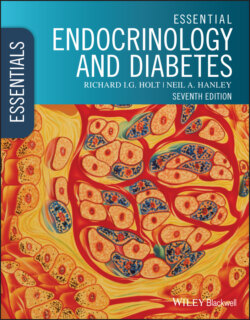Читать книгу Essential Endocrinology and Diabetes - Richard I. G. Holt - Страница 84
Immunoassays
ОглавлениеImmunoassay is a broad term for one of two different techniques: true immunoassay and immunometric assay. Both forms are based on the premise that the hormone to be measured is antigenic and can be bound by specific antibodies to form an antibody–antigen complex. Both forms of immunoassay also employ a label to generate a quantitative signal. Historically a radioactive isotope [e.g. iodine‐125 (I125)] was used, but now non‐radioactive methods, commonly using a fluorescent tracer, are employed. Both assays also rely on comparison of the patient sample with known concentrations of a reference compound.
To set up a calibration or standard curve for the immunoassay, a constant amount of antibody is added to a series of tubes with increasing, known amounts of a reference preparation; the example in Figure 4.1 is growth hormone (GH). This reaction is reversible with the antigen and antibody continuously associating and dissociating; however, after incubation, equilibrium is reached when tubes with more GH generate more bound complex. Measurement of the amount of bound complex (e.g. in terms of fluorescence or radioactivity) can thus be related to the quantity of GH that was originally added. This allows a calibration curve to be plotted, against which the same process can now deduce the GH concentration in a patient sample.
